Are you thinking of growing your own dye plants? Have a look at our Growing Fact sheets!
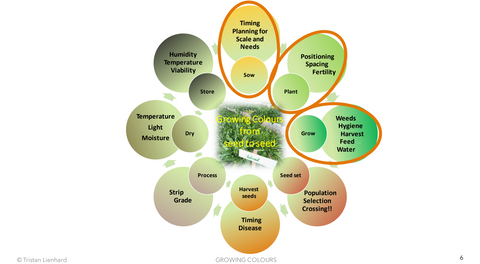
PLANT - Positioning, Spacing, Fertility
GROW - Weeds, Hygiene, Harvest, Feed, Water
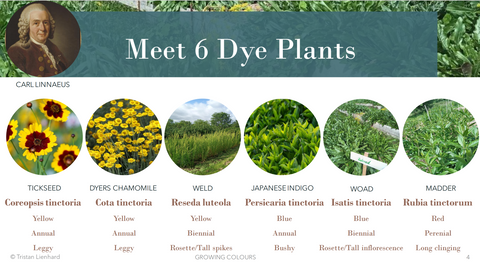
Growing Fact Sheets for Coreopsis, Cota, Persicaria, Reseda, Isatis and Rubia
1. Coreopsis tinctoria (Tick Seed)
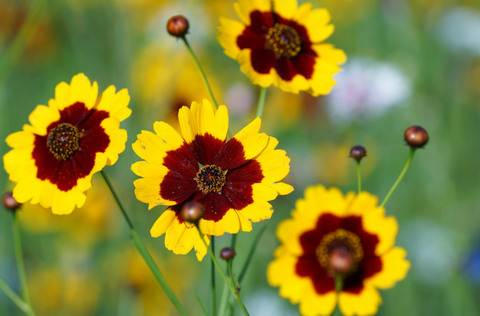
Native of America and introduced to Europe (https://powo.science.kew.org/taxon/urn:lsid:ipni.org:names:198219-1)
- Sow in spring as early as possible
- Plant out 25cm X 25cm
- Water requirements low
- Harvest whole stems or just flowers (great for printing)
D. Cardon (2007): Tickseed because of tick like appearance of seed
Active ingredient Flavanoids
Harvest when flowers bloom
2. Cota tinctoria (Dyers Chamomile)

Native of Europe, the Middle East and right across Russia and introduced to USA (https://powo.science.kew.org/taxon/urn:lsid:ipni.org:names:198407-1)
- Sow in spring as early as possible
- Plant out 30cm X 30cm
- Water requirements low
- Harvest whole stem or flowers only (clearer yellow with flowers only)
Bechtold and Mussak (2009): Fertility inversely impacts quality/quantity of flavonoids present
Too much fertility also increases lodging (ideally no added Nitrogen but Phosphorus and Potassium present)
_________________________________________________________________
3. Persicaria tinctoria (Japanese Indigo)
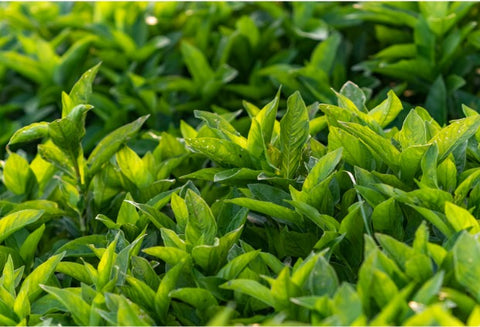
Native to south east/central China and Vietnam, it was introduced to rest of China, Japan, Transcaucasus and Ukraine (https://powo.science.kew.org/taxon/urn:lsid:ipni.org:names:60455325-2#other-data)
- Sow mid-April/beginning May (frost sensitive)
- Plant out 35cm X 35cm
- Water requirements high
- Harvest whole stems twice: end July and end September (feed after first cut)
Bechtold and Mussak (2009): Continuous water supply and high temperatures beneficial for yield and dye content
Needs high fertility initially (150-200Kg/Ha Nitrogen) + 40Kg/Ha extra Nitrogen after first cut
For seed plant is strict short-day plant therefore better in southern countries
4. Reseda luteola (Dyers Weld)
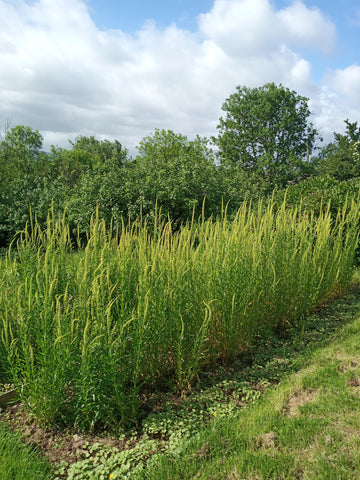
Native to central Europe, north Africa and the middle east. Introduced to northern Europe, some parts of north and south America, Australia and India (https://powo.science.kew.org/taxon/urn:lsid:ipni.org:names:715535-1)
- Sow in spring as early as possible
- Plant out 25cm X 25cm
- Water requirements low
- Harvest whole plant in second year mid flowering (timing influences dye content)
Bechtold and Mussak (2009): Fertility inversely impacts quality/quantity of flavonoids present – 60Kg/Ha of Nitrogen best (compared to 150-200Kg/Ha for woad)
No organic matter added
Needs full sun
5. Isatis tinctoria (Woad)
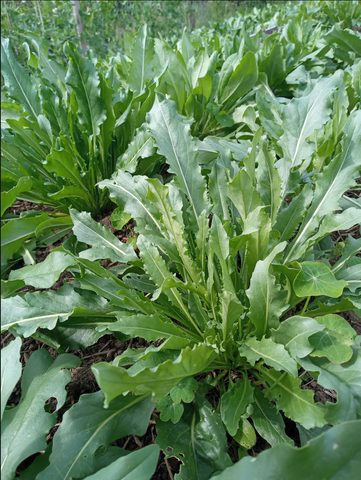
Native to north eastern Mediterranean, Turkey, Ukraine and Yugoslavia. Introduced to whole of Europe central and east Asia and some parts of north and south America as well as north west Africa. (https://powo.science.kew.org/taxon/urn:lsid:ipni.org:names:285873-1)
- Sow in spring as early as possible
- Plant out 30cm X 30cm
- Water requirements high
- Harvest 2 -5 times in first year: First cut end June and every 5 – 7 weeks thereafter (cut leaves off rosettes without damaging growing centre)
Bechtold and Mussak (2009): Continuous water supply and high temperatures beneficial for yield and dye content
Needs high fertility initially (150-200Kg/Ha Nitrogen) + 50Kg/Ha extra Nitrogen after each cut
_________________________________________________________________
6. Rubia tinctorum (Madder)
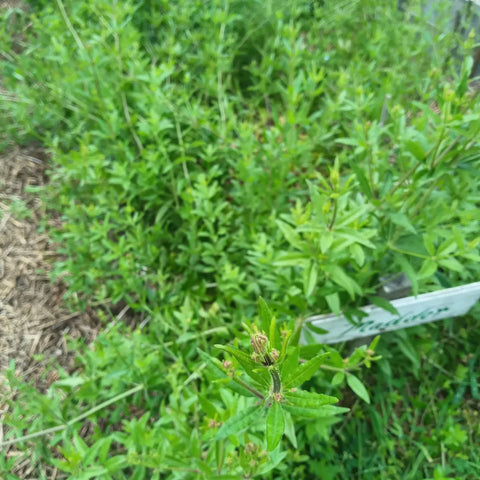
6. Rubia tinctorum (Madder)
Native to Italy and Greece, the Middle East, central and southern Asia to India. Introduced Europe, North Africa and small parts of north and south America (https://powo.science.kew.org/taxon/urn:lsid:ipni.org:names:765369-1)
- Sow in spring as early as possible
- Plant out 20cm X 30cm (between rows)
- Water requirements moderate (does not like water logging in winter)
- Harvest roots in year 3 after (using a mulch for weed control is beneficial)
- Bechtold and Mussak (2009): Needs High amounts of fertility each spring (140Kg/Ha N, 40Kg/Ha P, 150Kg/Ha K)
_______________________________________________________________
Referencs
Bectholt T. & Mussak R. eds (2009) The handbook of Natural Colorants. Wiley. Chichester
Cardon D. (2007) Natural Dyes. Archetype. London
Happy Growing!!
Happy growing everyone!



Hi Debra, yes absolutely :)
Guess I purchase seeds anywhere? Need to grow in POTS and then dye my fabrics for quilts is my goal>
Leave a comment